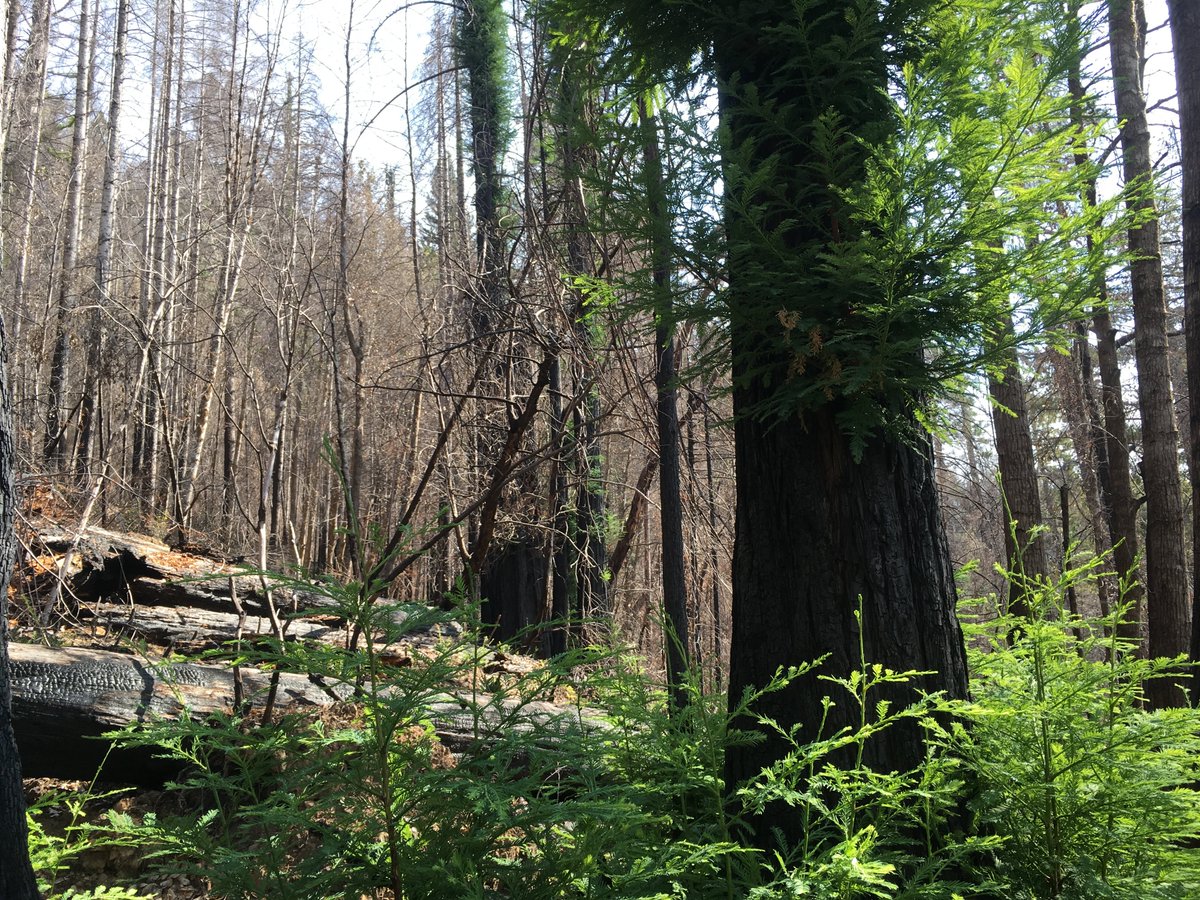I& #39;ve been so lucky to work with coast #redwoods and fire for my graduate research. I& #39;ve seen a lot of great information these past few days highlighting the fact that Sequoia sempervirens are highly resistant to and resilient in the face of fire. But how and why you might ask?
Coast redwood have the ability to prolifically sprout epicormically following damage, particularly following fire. This is rare for a conifer. Here are two old growth redwoods burnt quite severely from the 2017 Chetco Bar Fire, and a year later, their recovery is beginning.
But some coast #redwoods do die in fire. They fall over or they have their cambium damaged too badly to persist. Luckily, this is where their incredibly unique ability as a conifer kicks in: they sprout from the base to form new tree(s). This is also what creates "fairy rings"
Big trees and small trees can do this. This is a great trait to have because sprouting a new tree from an existing lignotuber results in redwood quickly initiating recovery when compared to needing to sprout from a seed, like in the case of Douglas fir.
If that doesn& #39;t work, or even if it does, coast redwood has yet another line of defense. Like other conifers, they can produce seeds prolifically, and in postfire environments, those seeds can do really, really well.
But what is not true? Coast redwood is not fireproof. Redwoods, both big and small, can die and do die in fire. It is well adapted to fire, but how more frequent fires will influence its ability to recover is unknown.
"Further research is needed to understand an old growth redwood& #39;s survivability in the face of compounded severe fire events..."
"which is critical to our understanding of the utility or risk of fire in old-growth systems in a region that is projected to experience more frequent and intensive fires in the face of global climatic change."

 Read on Twitter
Read on Twitter






